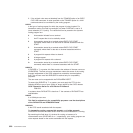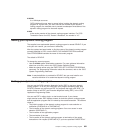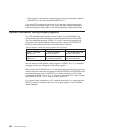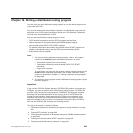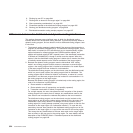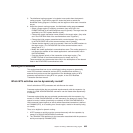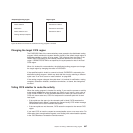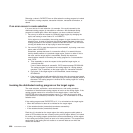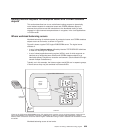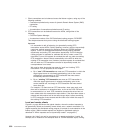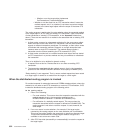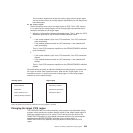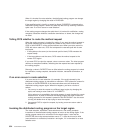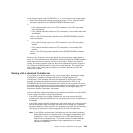Returning a value in DYRRETC has no effect when the routing program is invoked
for notification, routing complete, transaction initiation, transaction termination, or
abend.
If an error occurs in route selection
If an error occurs in route selection—for example, if the sysid returned by the
distributed routing program is unavailable or unknown—the distributed routing
program is invoked again. When this happens, you have a choice of actions:
1. You can try to route the request to a different target region, by changing the
sysid, and issuing a return code of ‘0’ in DYRRETC.
If this region too is unavailable, the routing program is again invoked for a route
selection error. A count of the times the routing program has been invoked for
routing purposes for this request is passed in field DYRCOUNT. Use this count
to help you decide when to stop trying to route the request.
2. You can tell CICS to treat the request as “unserviceable”, by issuing a non-zero
return code in DYRRETC.
Sometimes, perhaps because of a transaction affinity, it is essential that an
activity should execute on a particular target region, and on no other. If this is
the case, and the target region is unavailable, classify the request as
unserviceable. Instead of reinvoking the routing program for a route selection
error, CICS:
a. Tries repeatedly to route the request to the specified target region, at
1-minute intervals.
If one of these attempts is successful, CICS issues message DFHSH0108.
The routing program is invoked on the routing region for “routing attempt
complete”, and, if specified, on the target region for “transaction initiation”.
b. Every hour, if the target region is still unavailable, issues message
DFHSH0106.
c. If the target region is still unavailable 24 hours after the request was issued,
issues message DFHSH0107, and stops trying to route the request, which is
discarded. The routing program is invoked on the routing region for “routing
attempt complete”.
Invoking the distributed routing program on the target region
The route selection, notification, route selection error, and routing complete
invocations of the distributed routing program all occur on the routing region. If the
routing program wants to be re-invoked on the target region, it must set the
DYROPTER field in the communications area to 'Y'. It must do this on its initial
(route selection or notification) invocation—and again, if it is reinvoked for a route
selection error.
If the routing program sets DYROPTER to 'Y', it is re-invoked on the target region:
v When the activation is about to be initiated on the target region
v If the routed activation (transaction) terminates successfully
v If the routed activation (transaction) abends.
Each time it is invoked on the target region, the routing program could update a
count of BTS activities that are currently running on that region. When it is invoked
for routing, the routing program could use the counts maintained by all the regions
in the routing set (including itself) as input to its routing decision. This requires that
each region in the routing set has access to a common data set on which the
counts are recorded.
628 Customization Guide



